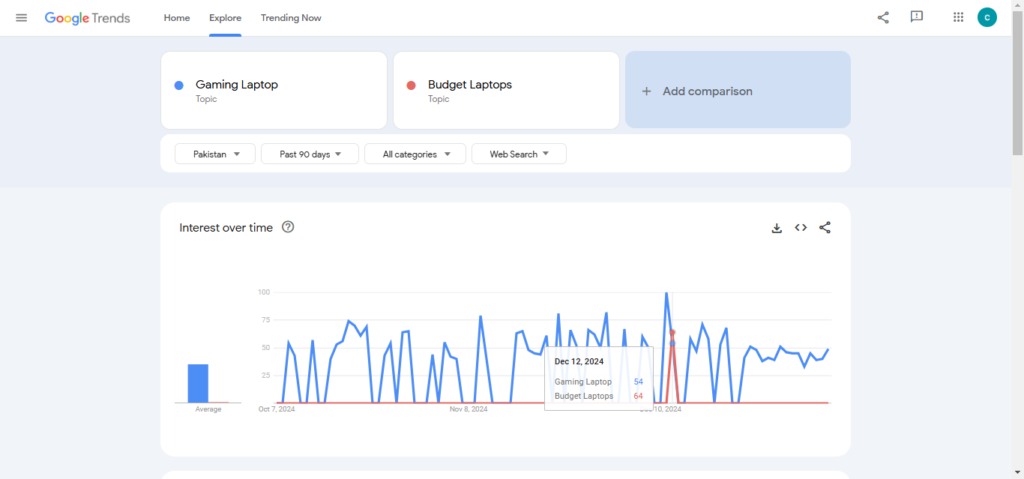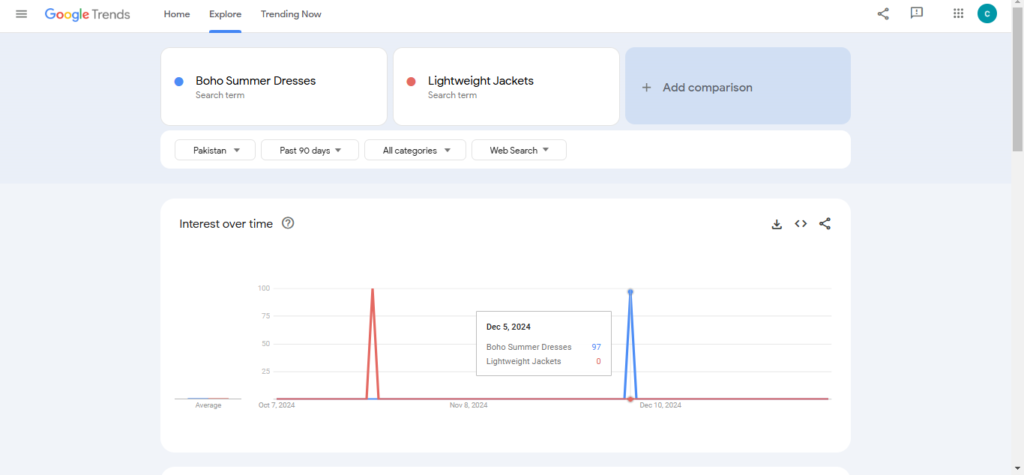Keyword research is the backbone of a successful SEO strategy. In 2025, as search algorithms become more advanced and user intent takes center stage, mastering keyword research is no longer optional—it’s essential. This guide will take you step-by-step through data-driven SEO techniques that help your content rank effectively while resonating with your target audience.
Keyword research involves identifying the terms and phrases your audience searches for online. These terms guide your content creation, ensuring it aligns with what people want to find. In 2025, developments in AI-powered search engines and trends like voice search mean our approach to keywords has evolved.
Imagine a user searching for “best laptops for gaming.” If your content doesn’t use this keyword or related phrases like “top gaming laptops,” you’ll miss out on attracting a relevant audience. Effective keyword research connects users to your website offerings.

Pro Tip: Use tools like AnswerThePublic to discover questions and phrases your audience is actively searching for.
1. Define Your Goals
Before diving into tools and data, clarify your objectives:
- Who is your target audience?
- What type of content will meet their needs?
- What actions do you want them to take (e.g., subscribe, purchase)?
Pro Tip: Use tools like Google Analytics to understand your current audience and their behaviors. Consider creating audience personas to visualize the different segments of your target audience, ensuring your content resonates with their specific needs.
Example: A fitness blog targeting beginners may create a persona like “Laura, 28, new to fitness, looking for at-home workouts.“ This persona can guide keyword selection, such as “beginner workout routines“ or “easy fitness plans.”
Downloadable Resource: Add a link to a Persona Creation Template to help readers create their audience profiles.
2. Analyze Your Competitors
Studying your competitors’ keyword strategies can reveal gaps you can capitalize on.
- Use tools like SEMrush or Ahrefs to analyze top-performing pages.
- Look for keywords they rank for that you haven’t targeted.
Example: If a competitor ranks for “eco-friendly office supplies“ and you sell similar products, evaluate whether this keyword fits your niche. Use a gap analysis tool to find terms they rank for where you currently have no presence.
Insight: Your competitors might rank for “reusable pens“ or “compostable notebooks,“ opportunities you can leverage with optimized content.
Visual Element: Include a screenshot of a keyword gap analysis using SEMrush or Ahrefs to guide readers visually.
3. Leverage Google Trends
Google Trends is a powerful tool to:
Compare multiple search terms.
Analyze seasonal patterns.
Discover related queries.
For example, if you’re writing about “summer fashion trends,” Google Trends can show whether “boho summer dresses” or “lightweight jackets” are gaining traction. You can also analyze regional differences to tailor content to specific audiences.

Case Example: A travel blog discovers “eco-friendly travel tips” spikes during Earth Month. They create a tailored campaign and boost seasonal engagement.
Tip: Combine data from Google Trends with keyword tools like SEMrush to validate and expand your findings.
5. Use Advanced Keyword Tools
In 2025, advanced tools will simplify data-driven SEO:
- Ahrefs: Detailed keyword research and backlink analysis.
- SEMrush: Competitor insights and keyword difficulty analysis.
- Ubersuggest: Affordable option for keyword ideas.
Pro Tip: Combine data from multiple tools for more robust results. For instance, start with SEMrush for competitive insights, use Ahrefs for backlink data, and cross-check suggestions with Ubersuggest.
Visual Example: Embed a comparison chart of features across Ahrefs, SEMrush, and Ubersuggest to help readers choose the right tool.
6. Prioritize Keywords
Once you’ve gathered a list of potential keywords:
- Focus on search intent: Is the user looking for information, making a purchase, or seeking a specific site?
- Analyze metrics like search volume, keyword difficulty, and CPC (cost-per-click).
- Group related keywords to create clusters, making your content more semantically rich.
Example: If you’re targeting “healthy snacks for kids,“ create clusters with terms like “nut-free school snacks“ and “quick healthy snack ideas for kids.“ Use these clusters to build interconnected content.
Tip: Visualize clusters with tools like MindMeister to map keyword relationships.
Downloadable Resource: Include a Keyword Clustering Template for readers to organize their keywords.
1. Voice Search Optimization
With the rise of voice assistants like Alexa and Siri, more users phrase queries conversationally (e.g., “What’s the best Italian restaurant near me?”). Optimize for long-tail keywords to capture this traffic. Add the FAQ sections to your content with conversational headings like “How do I find Italian restaurants nearby?”
Practical Tip: Use tools like AnswerThePublic to generate conversational queries for your niche.
2. AI-Driven Suggestions
AI tools like ChatGPT and RankBrain influence search results. To align with these technologies, focus on natural language and semantic SEO. Use AI-based keyword tools that analyze user behavior and predict emerging trends to stay ahead of the competition.
Pro Tip: Regularly update older content with AI-identified emerging keywords to maintain relevance.
3. Multimedia Search Trends
Google increasingly analyzes images, videos, and audio. To rank across multimedia platforms, use descriptive alt text and video captions. Include structured data markup for rich snippets and optimize file names with keywords.
Actionable Example: Optimize video titles like “How to Bake Gluten-Free Bread [Step-by-Step Guide]“ for YouTube search results.
1. Overstuffing Keywords
Keyword stuffing not only disrupts readability but can also lead to Google penalties. Instead, focus on naturally integrating keywords into your content.
Example: Instead of repeating “best smartphones 2025“ excessively, use terms like “top-rated smartphones this year.”
2. Ignoring User Intent
Ensure the content aligns with the keyword’s purpose. For example, someone searching “best smartphones 2025” likely wants a review, not a purchase link.
3. Using Outdated Tools
Stay current with tools and methodologies. Outdated strategies can waste time and resources. Invest in tools that adapt to trends, like AI-driven keyword tools or those with advanced analytics capabilities.
Consider a small business selling eco-friendly cleaning products. Through Google Trends, they discovered a rising interest in “plastic-free dish soap.“ By targeting this term and creating blog posts, videos, and product pages around it, they:
- Increased website traffic by 45%.
- Boosted product sales by 30%.
How They Did It:
- Used Ahrefs to analyze competitor content on similar topics.
- Created a content cluster around “plastic-free cleaning solutions.”
- Leveraged Google Ads to test keyword variations and refine their strategy.
It demonstrates the power of data-driven keyword strategies.
Mastering keyword research in 2025 is about combining traditional techniques with innovative tools and trends. By understanding your audience, leveraging the latest tools, and avoiding common pitfalls, you can craft a content strategy that drives traffic and achieves your business goals.
Ready to unlock SEO success? Start applying these strategies today and stay ahead of the competition!
Download our Free SEO Checklist for 2025 to kickstart your journey!
